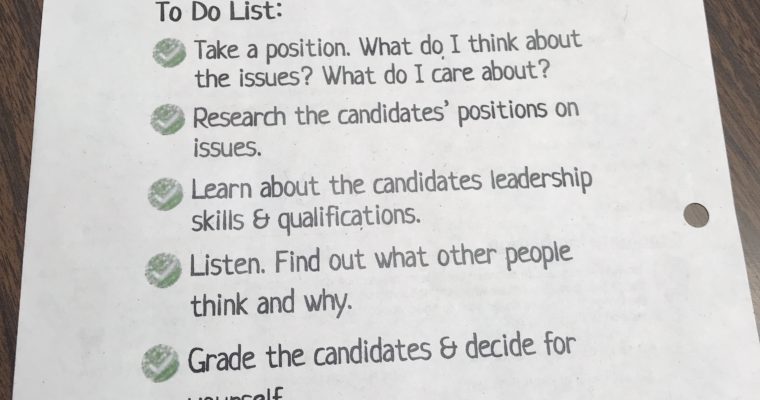Happy Election Day, everyone!
Today is an exciting, celebratory day in my classroom. Over the past couple of days my young citizens have been exploring the candidates in their legislative districts in order to be informed. We’ve been discussing why midterm elections matter, why their opinions count even though they are still too young to vote, and how to choose a candidate. Several credible organizations have posted lesson plans to help teachers teach students these ideas, including PBS and iCivics. My department and I chose an iCivics lesson in combination with a Teaching Tolerance voter pledge (which are attached to this blog post!)

Why do midterms matter?
I’m sure, dear history and civics teacher, you understand why midterm elections are important, but your students likely don’t. One question I was asked (more than once) was “How does this affect my daily life?” and my second favorite was “Is voting required?” I am going to be honest, I got on my soapbox for a little while when answering these questions, but then a colleague recommended this video by Khan Academy as a class opener.
Why does their opinion count even though they can’t vote?
Just because a student can’t vote doesn’t mean they don’t have an opinion that they can share! Informed students can inform eligible voters. Students can talk to parents and other adults in the school building about the candidates. One of my students has his own blog where he breaks down the issues for his readers. Students can make and hang posters around school. There are lots of ways they can have their voices heard and influence an election.
How to Choose a Candidate
Luckily, iCivics has an awesome walk-through of how to choose a candidate to vote for! iCivics’s lesson is technically meant to have students research fictional candidates, but why should they do that when they can find out about the people in their state running for Senate or about the people who are running for House seats in their legislative district? The lesson literally walks you and your students through the steps in becoming an informed voter. I chose to focus my class on the House of Representative seats up for grabs in New Jersey. Each student found out which legislative district they live in and who was running in this election from their district. They then used only the candidates’ websites and a neutral fact-checking site (www.politifact.com or www.votesmart.org) to get information about their candidates from a list of issues they identified as important to them. It was interesting to listen to their conversations during this time (I am assuming here that your classroom has discussion norms you’ve been using throughout the year. If you do not, you MUST set these up prior to any formal or informal political conversation!) and to find out what they individually and collectively think is important.
To close the lesson, students sign a voter pledge. It is NON-PARTISAN. Basically, if comfortable, students are asked to pledge that they will vote when they are eligible, and that if they can’t vote, they will encourage others to become informed voters as well as inform others about the facts they’ve found about each candidate running for political office.
You can view the iCivics lesson my colleagues and I used here.
